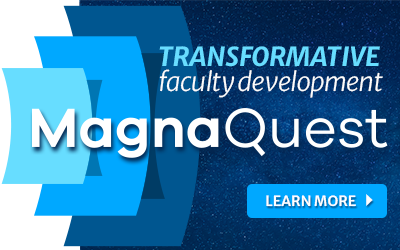In recent years, the soaring cost of college textbooks has added a new and significant financial burden to the rising costs of tuition for students.
It is not unusual for a student to face nearly a thousand dollars in textbook costs per semester. In the face of this reality, many students simply forgo textbook purchases. One study found that less than half of all students purchase textbooks for their courses.
Against this backdrop, the open textbook movement is making textbooks available to students for free. These books might be externally financed by states or nonprofit educational funds or self-financed through advertisements that appear in the books.
Dr. Andrew Feldstein, professor of marketing in the Reginald F. Lewis School of Business at Virginia State University, along with four colleagues, conducted a year-long pilot study during which 991 students in nine core courses in the VSU business school replaced traditional textbooks with openly licensed books and other digital content. The goal was to determine if there were benefits to using the free texts, and, if so, what they were. The results were published in the European Journal of Open, Distance and E-Learning.
One perhaps predictable outcome was a striking increase in the number of students reading assigned course material. Whereas an earlier institutional study found that only 47 percent of students purchased textbooks for their classes, fully 90 percent of students enrolled in the courses report accessing material at the Flat World Knowledge website that was used to host the institution’s e-textbooks.
Even more impressive was that 68 percent of the students found the digital content more useful than traditional textbooks. Finally, students in courses using e-textbooks tended to have higher grades and lower failure and withdrawal rates than did those in identical courses using traditional textbooks.
Professor Feldstein agreed to discuss his study with us.
Chris Hill: What are some of the advantages of using e-textbooks over print textbooks?
Feldstein: The most obvious advantages are price and portability. E-textbooks cost considerably less than paper versions, and students can carry a whole semester’s worth of e-textbooks around without needing heavy backpacks. E-textbooks are also easy to search and navigate, making it easy to find specific information quickly and efficiently.
Things get more interesting when we look at e-textbooks not merely as inexpensive replacements for traditional textbooks but as a robust way to deliver feature-rich content. Hyperlinks, embedded videos, interactive quizzes, and social note-taking are just a few of the enhancements we can make to content when it is delivered digitally.
Chris Hill: Which file formats did students prefer and not prefer for e-textbooks, and why?
Feldstein: Because the Flat World Knowledge service can be accessed on a web-based platform, a majority of students go directly to the website to access their e-textbooks. This has evolved considerably since we began this project almost five years ago. More and more students, however, are using file formats that don’t require an online connection. In the beginning, despite the availability of multiple formats, students tended to download the PDF files of each book chapter. MOBI files (used with the Kindle) garnered some interest early on as well. Eventually, with the proliferation of smartphones and tablets, students began using ePub files more often. They are much more feature-rich than PDF files. For me, the most surprising aspect of e-textbook content consumption is the number of students who read the textbook material on their smartphones.
Chris Hill: Can you describe Flat World Knowledge?
Feldstein: Flat World Knowledge publishes Creative Commons–copyrighted e-textbooks. This allows instructors to edit and customize an e-textbook without copyright or royalty issues. Its website is http://catalog.flatworldknowledge.com, and it is also into competency-based learning and courseware.
We purchase seat licenses that allow our students to access the e-textbook content through the company’s online portal or by downloading PDF, ePub, or MOBI files. Students also have access to online quizzes, flashcards, highlighting, and note-taking applications, while faculty have access to PowerPoint slides, test banks, and instructor’s manuals that accompany the textbooks.
Students pay a nominal technology fee for each e-textbook. One nice feature of this company is that there are no digital rights management limitations that cause files to expire, and so once a student downloads a copy of the e-textbook, that student will have access to it even after the course is over.
Chris Hill: What sorts of issues should an instructor consider when deciding whether to use e-textbooks?
Feldstein: Whether to use them probably depends on the type of course and the density of the content. Recent research shows that, for more complex subject matter that is more narrative in nature, students show some preference for traditional textbooks. For textbooks that are used in survey or introductory courses, I have found that students really appreciate the digital versions. Of course not all e-textbooks are created equal, and I recommend looking for three primary characteristics as you make your choice: accessibility, quality, and user experience.
Accessibility means affordability, but it also means ease of access, which includes giving the students a variety of ways to consume the content. I alluded to this in the last answer. Access also refers to time limits. The great thing about having DRM-free files to download is that students can still access the material after the course has ended. This won’t happen if access expires soon after the course does.
We identify quality not only as an aspect of content but as it relates to student and instructor interactions with the content. When it comes to textbooks, quality has always been a major part of the decision-making process. Faculty want well-written textbook content that is compatible with their courses and includes the array of instructor resources they have come to expect from publishers. It is important that any solution take these expectations into account.
In terms of user experience, content providers must pay attention to navigation, usability, and layout. It is not enough to transfer a traditional paper textbook to a screen to provide this experience. Robust search and bookmarking features built into e-readers allow students to create an alternate, linkable table of contents that lets them customize how they navigate the book. These tools, as well as the ability to attach linkable notes and highlight important passages, create an environment with multiple opportunities for students to interact with the content and feel a greater sense of ownership. We have seen a steady increase in the number of students who are benefiting from these features.
Christopher Hill is the former editor of Distance Education Report and the current editor of Academic Leader Today
Reprinted from Distance Education Report, 20.8 (2016): 4, 6. © Magna Publications. All rights reserved.



